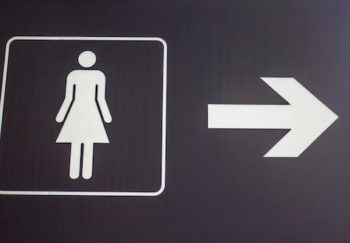
When I reached out to Jennifer Megan Dillman, NP, to ask my questions about pelvic floor disorders and Kegels, she was very excited to talk.
“People don’t know we’re here,” she said. But, she argues, they should. The conditions the Pelvic Medicine and Reconstructive Surgery clinic treats affect a lot of women.
“Bowel leakage, urinary incontinence – these are a silent disorder,” Dillman says. “These conditions are vastly underreported, because people are too embarrassed to bring it up with their doctors. And those who do don’t feel their concerns are heard or addressed as thoroughly as they could be.”
In this regard, I feel lucky. My mother and grandmother were both obnoxiously open about pretty much all their health issues. Grandma very proudly made us aware of the fact that, just as her doctor told her, she practiced her Kegel exercises at every stoplight.
Then my mother experienced vaginal prolapse. Her experience, awkward and emotional, made me wonder how to avoid a similar plight. Would Kegels help? If so, how many? And what’s a pelvic muscle, anyway?
In this Q&A session, Dillman graciously answered my questions.
Where did Kegels get their name?
In 1948, Arnold Kegel, MD, invented the perineometer to measure the strength of pelvic floor muscles. He also introduced the exercises that bear his name, to give women a nonsurgical treatment for incontinence.
Pelvic Floor Muscles: Holding it All Together
Q. What is a pelvic floor muscle?
A. Pelvic floor muscles run from the pubic bone to the tailbone. In women, they hold up the bladder, the uterus, and the bowel as well. Your abdominal core and back muscles are the support for the floor. As your ab and back muscles set your posture, they help with the pelvic muscle, too.
What happens when these muscles weaken?
If you think about your bladder, vagina, anal cavity – these do not have a bony support structure. If any of the muscles in this area weaken:
- The bladder can push into the vagina.
- The uterus or top of the vagina can come down from above.
- The bowel wall can push in from behind.
Any of these organs falling into the vagina come under the term pelvic organ prolapse.
Painful Sex?
Prolapse, while uncomfortable, does not cause pain. Pelvic pain can be a sign of pelvic spasm or other issues. Either way, see a doctor.
Pelvic organ prolapse can cause urinary incontinence, fecal incontinence, urinary tract infections, etc. These are manifestations of the same issue: Your pelvic floor muscles have stopped functioning.
Isn’t it normal for women to have their pelvic muscles weaken as they age?
Yes and no. A lot of women do think it’s part of having children and a natural part of aging. I would say it’s common but not normal.
But doesn’t menopause play a role in pelvic floor weakness?
Yes. With the loss of estrogen production during menopause, your muscle tissue can thin. We see an increase in urinary frequency and urinary tract infections. But menopause alone doesn’t cause muscle weakness.
What causes pelvic floor muscles to weaken?
The biggest factor is having babies. Birth in whatever form it takes – whether vaginal or by C-section – the pregnancy in and of itself adds pressure to pelvic floor. Having babies is a trauma to our bodies, from the childbirth and delivery, to the straining and heavy lifting after birth.
Other factors include having a hysterectomy or other abdominal surgeries, being overweight, the way you walk, your gait, your posture – not using good body mechanics. All of this puts strain on your pelvic floor that might weaken the muscles. These all have a cumulative effect.
How do you know if you have weak pelvic muscles or vaginal prolapse?
Women will feel pressure in their vagina, or bulging, like something’s falling out of you when you’re up and walking around. Other symptoms:
- The feeling gets better if you lie down.
- You feel things coming down as the day progresses.
- You have bowel leakage and incontinence
How do weak pelvic muscles cause urinary incontinence?
Weak pelvic floor muscles contribute to two types of urinary incontinence:
- Stress incontinence: When you stress your body in a way that causes you to urinate without meaning to. For example, you bend over to pick something up or start running. In these cases, your urethra opens up.
- Urge incontinence: What happens when your bladder muscle is contracting before you get to the toilet. That is, it’s when you need to go to the bathroom right away and can’t wait.
Most women have a mixture of these types. This can make it difficult for women to figure out. You have two separate things happening in the bladder, so it’s really frustrating. And treatment requires a combination of therapies.
Kegels 101: When, What, How
What the heck is a Kegel?
A Kegel is an exercise that strengthens your pelvic floor muscles.
How do you do a Kegel?
Tighten and release the muscles you use to stop yourself from urinating. Squeeze and hold for a few seconds, then relax.
How do I know I’m squeezing the right muscle?
To correctly identify the muscle we’re talking about, imagine yourself in a group of people. You need to pass gas and don’t want it to happen. That muscle group you would use to keep that from happening – that’s the pelvic floor muscle you strengthen with Kegels.
Is there a way to know if you’re doing a Kegel exercise correctly?
First of all, no one should be able to tell you’re doing them.
And second, you shouldn’t squeeze your thighs, butt or abdominal muscles to help. Put your hand on your belly, so you can feel if you’re squeezing there or not. And don’t hold your breath while you’re doing them. Keep breathing to help relax your abdominal wall.
How many Kegels do you have to do a day to really make a difference?
My colleague, JoAnn Pinkerton, MD, a specialist with the Midlife Health Clinic, recommends a daily routine of 10 sets of 10. Hold each Kegel for a count of 10, so you do 100 10-second Kegels a day.
I think it’s easier to try to hold that contraction for 3-5 seconds, then relaxing, 5 times, 3 times a day – a smaller prescription like that is also doable.
Can you do too many Kegel exercises?
Yes. Overuse of Kegel exercises can lead to pelvic pain and pain during sex. But the exercises don’t harm you. Discomfort and pain just means you’re doing too much.
What’s the biggest mistake people make when it comes to Kegels?
A lot of people don’t use the correct muscle. They’ve been doing something, but they haven’t been doing it right – or they don’t know if they’re doing it right or not.
Does it matter if you sit or stand when you do them?
You should practice these exercises sitting, standing and lying down. That way you’re making sure to work the muscles that have weakened in different positions.
When should a woman start doing exercises to help prevent prolapse?
It’s better to start earlier, if you can. Once there’s a hernia, all the Kegels in the world won’t rebuild that wall.
You’ll definitely want to start practicing Kegels by the time you’re considering childbirth or during your first pregnancy.
Can and should men do Kegel exercises, too?
Yes. Kegels can help with prostate issues and help men reduce premature ejaculation and urinary incontinence.
Kegels Support & Other Treatments
What if Kegels aren’t working – or you’re not sure you’re doing them right? Or you can’t do them at all?
We have a pelvic floor rehab therapy program that we just started this year.
The program takes 8 weeks of weekly 10-15 minute sessions. During each session, we place a small probe in the vagina. The probe sends a small amount of electric current to the pelvic floor, causing the pelvic floor muscles to contract. We also use a small rectal probe during the procedure to measure the strength of the pelvic floor contraction.
During the rest of the week, you practice Kegels.
We’ve gotten very positive feedback. The data shows 75 to 80% of patients see improvement. There are no side effects, and it’s less invasive than having surgery and medication. It’s really pretty amazing.
If you do have prolapse, what can you do?
We offer several options. We can offer pessaries or surgery to help the prolapse from getting worse.
Get Help With Your Kegels
You can see Dillman and other experts at the Pelvic Medicine and Reconstructive Surgery clinic at Fontaine.
What’s a pessary?
Similar to a diaphragm, a pessary is a flexible silicone device that sits behind the pelvic bone in the back of vagina to help support weakened muscles. In the past, women used rocks and potatoes for the same function. Pelvic floor weakness is not a new problem.
What about jade or yoni eggs that you can buy for ‘vaginal weightlifting’? Do these strengthen your pelvic floor, too?
While holding such an egg probably uses a similar muscle movement as a Kegel, there’s a clear risk. The relaxing part of the Kegel is just as important as the contraction. If you hold an object so tightly you can’t relax, that can lead to pain during intercourse or keep you from being able to relax enough to poop or pee normally.
Do you have to get a referral to be seen by a pelvic medicine specialist?
You can, but you don’t have to. You can either have a doctor or OB-GYN refer you, or you can self-refer by giving us a call.


Good article. Did the doc mention if there are different types of kegel exercises? Or is it all the same exercise but simply doing them in different positions will help?
It’s been a month since I started the Kegel exercises. But to date, I see no improvements in my ability to hold my squeezes. I am not sure if I am doing it correctly. Also, I have to admit that I missed a few days in the middle.
Oh, my! I think you are so right about the doable amount of kegels. I’ve been doing them for a year but often feel I have overdone my muscles. Will cut back. I think I have been contracting some thigh muscles because they are having painful spasms now. Thank you for verifying pain is not from the prolapse. I am on vacation from kegels until I feel better. LOL. My prolapse has actually gotten better in a couple days since I stopped the kegels. Since I started kegels a year ago my prolapse has seen to gone back up in my body some. I’m hopeful. Will the torn or weakened muscles ever repair itself?